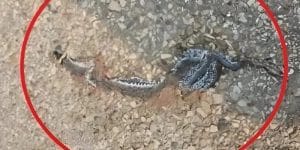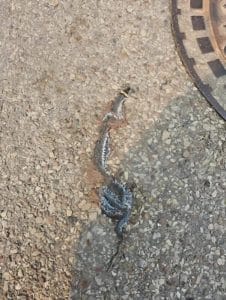Yesterday, while wandering through the city, I was glued to my phone—lost in notifications, barely noticing the world around me. But then something on the sidewalk caught my eye.
At first, it looked like a piece of trash. Maybe an old rag. I nearly walked past it without a second thought. But something made me stop.
I stepped closer. My stomach dropped.
It wasn’t garbage. It was a small grass snake—crushed, lifeless, its body twisted unnaturally. People hurried by, unaware. Cars rushed past, indifferent.
I couldn’t look away.
What struck me wasn’t just the tragedy of this tiny creature, but what it represented. Lately, locals have reported more and more sightings: snakes on balconies, in backyards, even slipping into homes.

Climate change and rapid urban development are pushing wildlife into unfamiliar territory. As we claim more of the planet, animals are running out of space. They’re adapting—or dying.

That snake reminded me of something easy to forget: nature doesn’t disappear when we ignore it. It adapts. It resists. And sometimes, it shows up right on the pavement in front of us.
It was just a snake—but it changed how I see the city.





